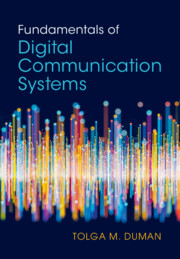Refine search
Actions for selected content:
4 results

Fundamentals of Digital Communication Systems
-
- Published online:
- 10 March 2025
- Print publication:
- 23 January 2025
-
- Textbook
- Export citation
1 - Introduction
-
- Book:
- Fundamentals of Digital Communication Systems
- Published online:
- 10 March 2025
- Print publication:
- 23 January 2025, pp 1-10
-
- Chapter
- Export citation
6 - Age of Information in Source Coding
-
-
- Book:
- Age of Information
- Published online:
- 02 February 2023
- Print publication:
- 09 February 2023, pp 140-165
-
- Chapter
- Export citation
1 - Introduction to Information Theory and Data Science.
-
-
- Book:
- Information-Theoretic Methods in Data Science
- Published online:
- 22 March 2021
- Print publication:
- 08 April 2021, pp 1-43
-
- Chapter
- Export citation
